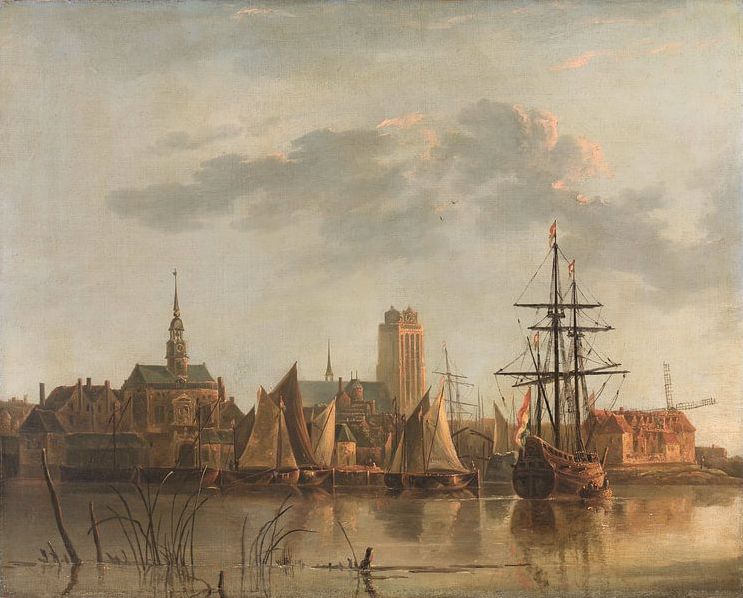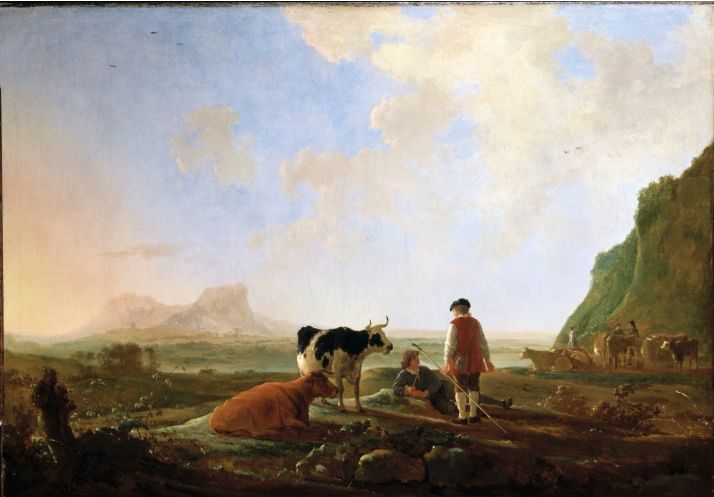Albert Cuyp (1620-1691) was a prominent painter of the Dutch Golden Age, whose development and style hold significant importance in Dutch art history. Cuyp's early works were influenced by Jan van Goyen, adopting a simple style that emphasized natural landscapes. However, over time, Cuyp gradually developed his unique style, particularly in his use of light, color, and technique, which was associated with several Dutch painters who had traveled to Italy.
Cuyp's paintings are known for their bright tones, vivid colors, and fluid techniques. His artistic style was heavily influenced by Dutch painters who had been to Italy and whose works were often imbued with the warm air of the Mediterranean. After returning home, these artists typically received commissions from the upper class. Cuyp was born in Dordrecht, a prosperous port and commercial city, where he primarily worked for the noble families.
In 1658, Cuyp married a widow and soon after gave up painting. Despite this, his works exude a sense of tranquility and peace. In his landscape paintings of Dordrecht, clouds are tinged with the red glow of the setting sun, reflecting off the calm water. Clusters of fishing boats are moored in the harbor, with Dutch flags waving from the masts of ships about to set sail. These elements symbolize the prosperity brought about by the rapid development of Dutch trade and overseas empire.
Cuyp's works are not merely depictions of landscapes but also reflections of the society and culture of his time. His paintings idealize the serene rural life, especially those depicting pastures, countryside scenes, and animals. His work, such as "A View of Dordrecht," portrays the sunset over Dordrecht, creating a poetic pastoral scene.

Compared to other contemporary Dutch painters, Cuyp's works exhibit a unique use of light and shadow. He skillfully used light to create depth and spatial effects in his compositions, giving his works strong visual appeal and attraction. For example, his painting "Herdsmen with Cows" shows herdsmen and cattle in a field, set against the backdrop of a warm sunset and expansive sky. This painting perfectly captures the subtle color variations brought about by changing natural light.

Although Cuyp stopped painting shortly after his marriage, his contributions to Dutch art are undeniable. His works influenced subsequent artists not only in technique but also by introducing new elements and vitality into the themes and styles of Dutch Golden Age landscape painting. Through his unique handling of light, color, and scenery, Cuyp set a new standard for Dutch landscape painting, ensuring that his works hold an important place in the history of art.